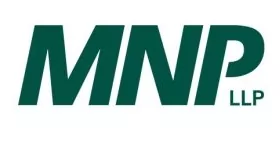Many medium-sized organizations encounter great difficulty in scaling up their operations once their personnel or revenue has grown to a certain size. The reason for this difficulty is often because they have outgrown their current systems and processes. Uncoordinated business processes, a lack of timely, trustworthy information, inadequate accounting systems, the need for frequent operational reconciliations of information and staff burnout: These are all signs that legacy information systems are no longer able to support an organization's current operations, let alone further growth.
Once you've identified you have a problem, it can be difficult to determine how to proceed—and for good reason. Selecting and implementing the right enterprise software product is time-consuming and fraught with business risk. The wrong choice or a failed implementation can degrade business performance.
Compounding the challenge is that even when mid-sized organizations realize they need to replace or upgrade their legacy systems, they typically lack the internal technology resources to develop strategic business system plans, navigate the increasingly complex array of options in the marketplace and deal with software vendors promising the moon.
A couple of examples illustrate the challenge:
Example 1: An organization providing rapidly growing funding for First Nations educational programs found it was becoming increasingly difficult to meet its extensive and complex reporting obligations to numerous funders and stakeholders. The organization had to manage more and more information outside its legacy accounting system, and staff were overwhelmed with the amount of re-work and manual reconciliation of financial data. The executive director realized they needed to replace their legacy accounting software with a more robust system. However, the organization had only one in-house technology resource: a network administrator who did not have the skills and experience to guide the selection of a core corporate system.
Example 2: A Crown corporation managing the deployment of a provincial electronic health records strategy, with a rapidly growing budget and project portfolio, as well as an upcoming merger that would exponentially increase the number of transactions to be handled, needed a more robust Enterprise Risk Planning (ERP)-type system. In addition, they needed to make a decision quickly to meet year-end deadlines. Executives realized the organization did not have the capacity to execute the selection process with internal resources in the time available.
If your business is in a situation similar to the examples above, you should consider the approach these organizations followed. They brought in an outside consultant who was objective, software vendor–independent and had a proven software selection and implementation methodology.
Depending on the expertise and availability of your internal resources, you can engage the consultant to advise you on your process; help define requirements; conduct the software selection process; manage the implementation of a new system; or all or some combination of these. In the examples above, one of the organizations engaged a consultant to carry out a full software selection and implementation effort, while the other engaged the consultant only to conduct the software selection process. In both cases, the key to success was a formal process to define and prioritize requirements to guide market research and evaluate solution options.
The content of this article is intended to provide a general guide to the subject matter. Specialist advice should be sought about your specific circumstances.


